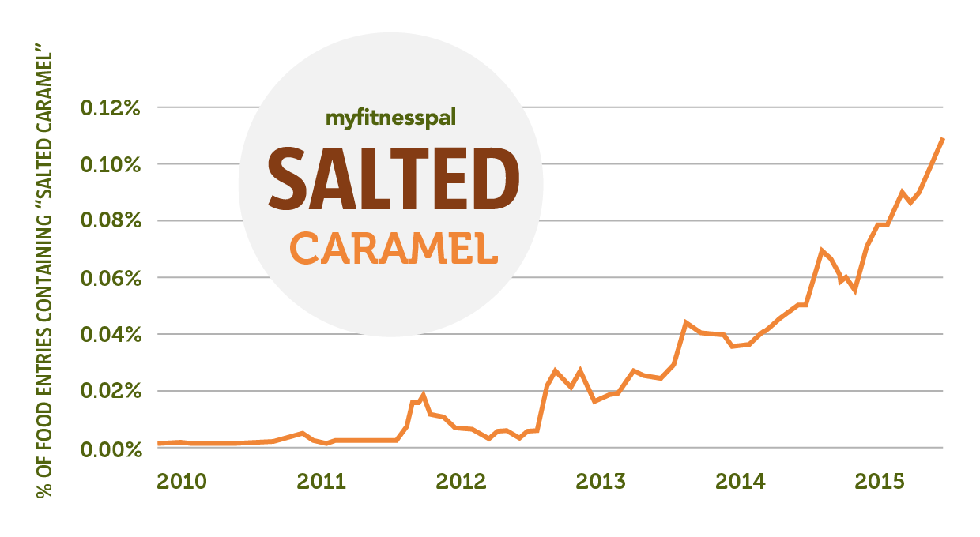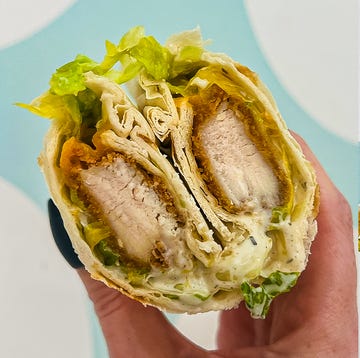Look to your left. Look to your right. Either of those people bought something pumpkin-flavored last year. If they're both allergic — or vehemently opposed to the gourd — that person is you.
Roughly one in three people picked up something pumpkin-y last year, and while MyFitnessPal, a fitness- and diet-tracking app, found that the peak day for downing pumpkin spice-related treats was down for the first time ever, that doesn't mean all things pumpkin are on their way out.
In fact, sales of pumpkin-infused foods and drinks are up 79 percent since 2011, according to Nielsen data.
It's a $361 million business.
Believe it.
That's more than the GDP of some parts of the world (the Federated States of Micronesia, Marshall Islands, Kiribati and Tuvalu, in case you're curious). That's not even counting any impulse buys you pick up when ordering a Pumpkin Spice Latte, which tends to make people spend $1.14 more per order, according to research from the NPD Group.
It's no wonder companies are coming out with everything from Pumpkin Spice Twinkies to Pumpkin Spice-flavored hummus to capture a bit of the buzz. They hit a promotional sweet spot, capitalizing on two major areas Wharton School marketing professor Jonah Berger outlined in his book, Contagious.
"While you could probably make pumpkin spice foods year-round, they're typically only available in the fall, and that scarcity drives demand," he explains. "Fall has also become a trigger for pumpkin spice. People think about going pumpkin picking, and so when the season comes around, they're immediately reminded of the flavor and want to try it."
Pumpkin-related tweets tend to pick up in August and run through December, according to data from Twitter, and most of the buzz is surrounding—Can you guess?—the PSL. The Pumpkin Spice Latte was the topic of 1 million tweets in 2014, and has been tweeted about 375,000 times so far this year.
Pumpkin gets more attention than apples.
So why are we obsessed with pumpkin, and not, say, apples? It all goes back to scarcity, Berger says. While apple cider is associated with fall and has more of a seasonal flair, apples are more of an everyday food.
Also, apple cider hasn't had the same marketing blitz behind it that say, the Starbucks Pumpkin Spice Latte has, with countdowns to its release, an official Twitter account and a 10-year anniversary campaign in 2013 that played into what may be Starbucks' greatest skill: Using its "third place" concept, where a coffee shop isn't just where you grab a quick caffeine boost but a hangout between work and home, so grabbing a PSL became tied to hanging out with friends, enjoying the season — and reaching a point of ubiquity that it became skewered as the signature drink of choice for a "Basic B*tch," AKA a girl who likes all of the most universally likable things.
It's now the symbol of the Basic B*tch.
Last year, as the term "Basic B*tch" — often depicted as a girl clad in Ugg boots and leggings, who worships Michael Kors and all things fall, especially the Pumpkin Spice Latte — became known as both a celebrated lifestyle and an insult, it also became a sign of just how far the PSL has infused itself in pop culture.
Food products typically have a quick rise and fall, Berger says, but some brands enjoy a longer shelf life (pun definitely intended) when they have a trigger that reminds you to buy them, a sense of scarcity, and give you some social currency — the sense that you're in the know, because you're the first to know when the PSL hits stores, and you drink the drinks and eat the pumpkin-y foods no one else had tried yet. Simply put, it makes you look better.
But, as the Basic B*tch mockery proved, there comes a point when things are so mainstream that you're no longer deemed as cool or in the know when you post about them. Online, social currency tends to be the most powerful marketing tool, where what you promote reflects who you are, which could signal why people are talking about pumpkin less — but are buying more.
You are what you pin.
When we asked Pinterest what fall-inspired foods people are pinning, pumpkin was on the decline — there are 20 percent less pumpkin spice-related recipes being pinned this year. The buzzworthy treat taking its place? Caramel, or specifically, salted caramel.
Pins featuring caramel recipes were three times more popular than pumpkin spice last year, and while the number of pumpkin spice pins continue to drop, caramel ones are already up 5 percent over last year, according to a Pinterest representative.
MyFitnessPal has seen a similar climb, with people logging 7 percent more salted caramel treats than last year. Salted caramel, however, is popular year-round, so even though it spikes in the fall, it may never eclipse pumpkin as the quintessential, "Finally, relief from these hellfire summer days! Fall is coming!" treat.
"If you ask most brands though, would they rather have something that sells like crazy year-round, or just for one to three months? Most would choose year-round," Berger says.
You can eat them anytime. For better or worse.
Despite being known as a seasonal treat, some brands are selling pumpkin foods for longer periods of time. It's a risky gamble — you lose the "OMG, gotta get it now!" sense of urgency that a short timeframe has, yet you get to capitalize on the continued sales of pumpkin fanatics. MyFitnessPal found that in 2009, people stopped logging pumpkin spice foods around Jan. 5. In 2014, these treats were logged until March 1. With a pumpkin-spice season that's almost two months longer, it makes sense that annual sales overall would climb — and that the peak day to eat those treats wouldn't be as much of a sales spike as it has been in the past. Over the past three years, the "peak" day to eat pumpkin-y treats has crept from Oct. 12 to Oct. 31, and last year, 7.3 percent less items were logged on the big day.
For Starbucks, the short sales window works. The PSL typically hits stores the week after Labor Day, disappearing from menus when supplies run out — usually the end of fall — giving you just a few months to get your fix. Enthusiasm doesn't seem to be waning, either: The drink continues to be the most popular seasonal beverage of all time (sorry, salted caramel mocha), and the company has sold more than 200 million in the PSL's 12-year history, a Starbucks representative said.
Basic B*tches may not be forever, but America's love of all things pumpkin sure seems to be. Even if it's not as fanatical as in years' past.
Follow Delish on Instagram.
















